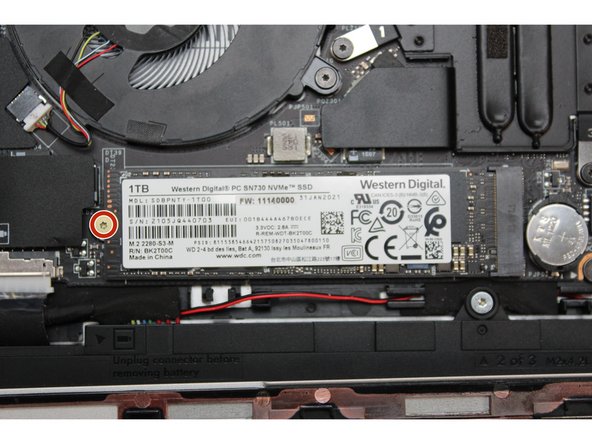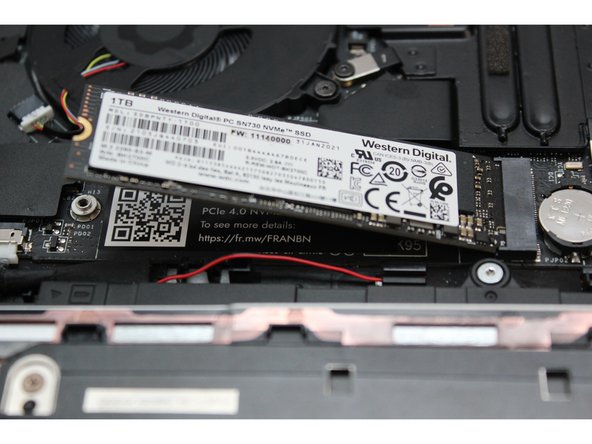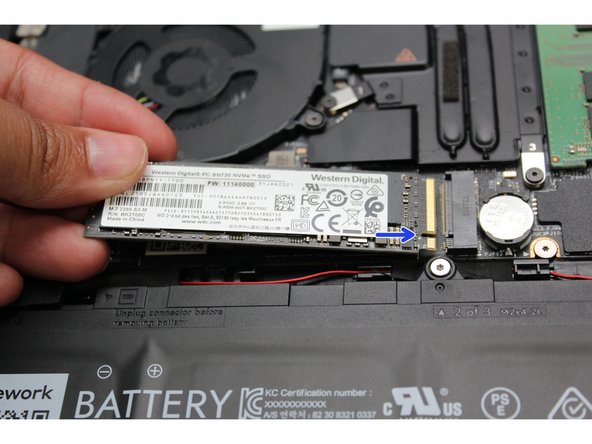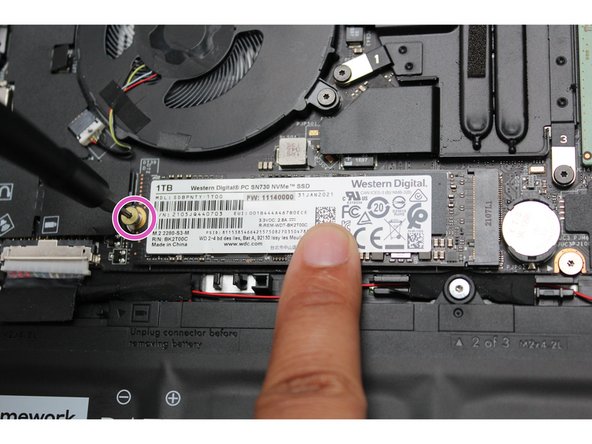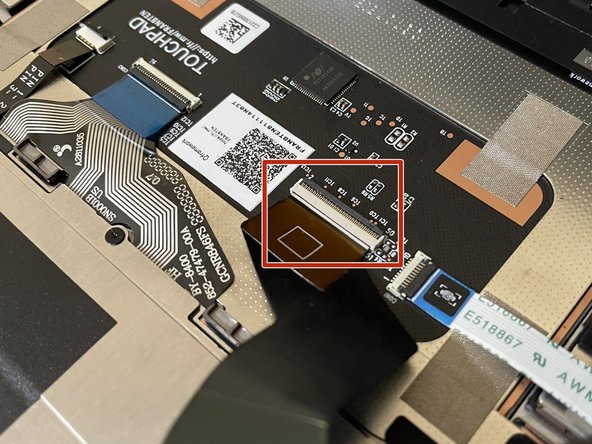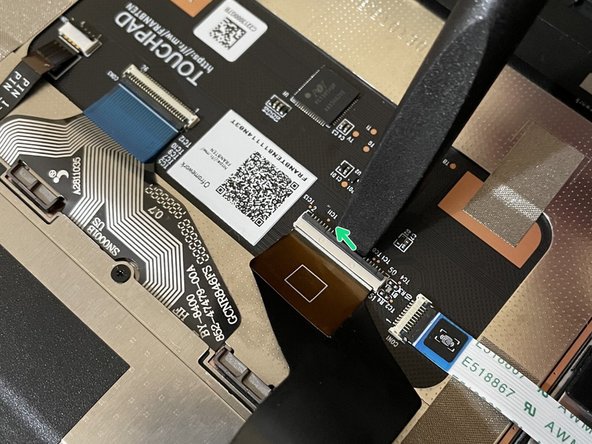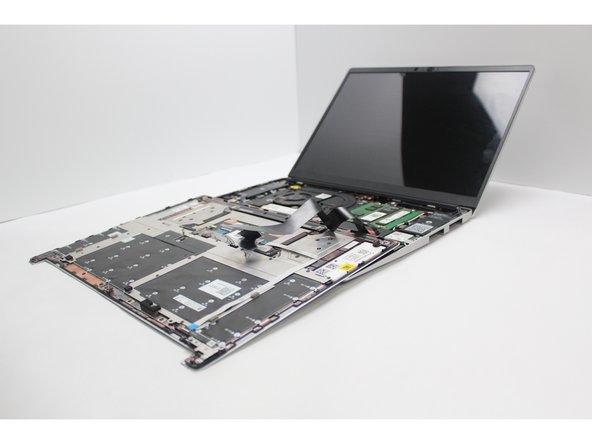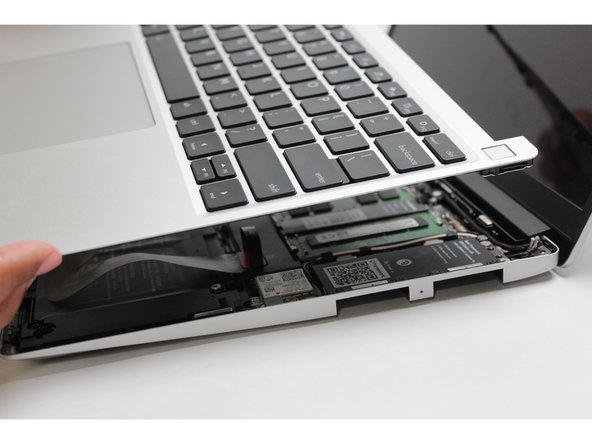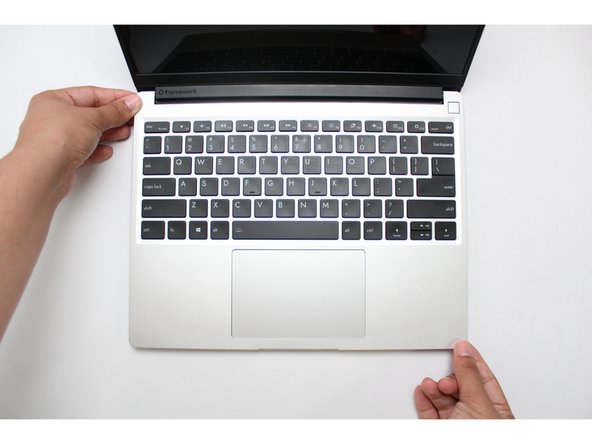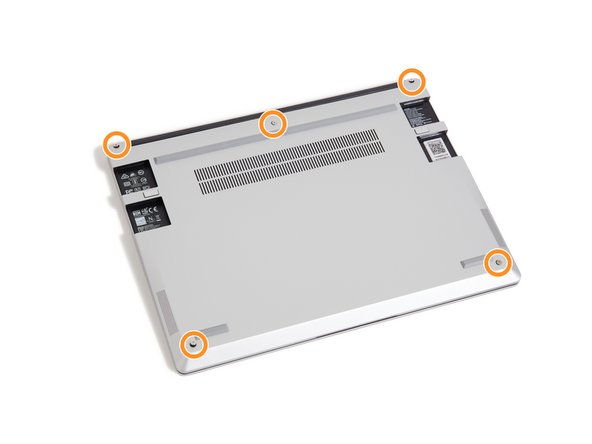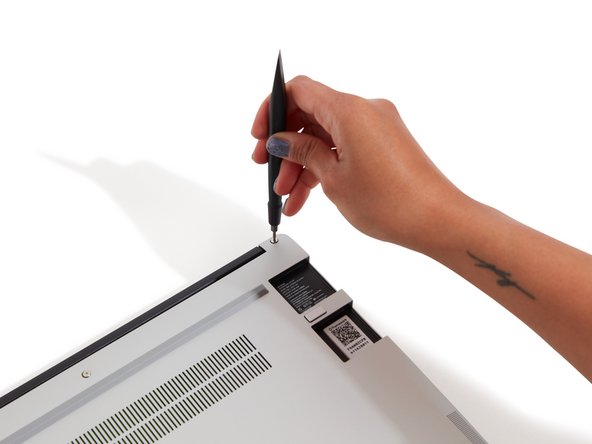Introduction
Be sure to back up your data before replacing your Storage.
Tools
Parts
-
-
Power off the Framework Laptop by navigating to the Windows icon on the bottom left and clicking on "Power" followed by "Shut down," or if on Linux, the equivalent action there.
-
-
-
Unplug your power cable from the USB-C Expansion Card in your Framework Laptop.
-
-
-
Close the lid on your Framework Laptop and place it upside down on a soft, non-marring surface, such as the bag that it shipped in.
-
Using the T5 bit in the Framework Screwdriver, unscrew the 5 fasteners on the Bottom Cover. These fasteners will remain attached in the Bottom Cover so that you do not lose them.
-
The fastener on the bottom left (circled in red) will not unscrew as far as the others, as it is acting as a lifter for the Input Cover.
-
You'll hear this fastener start clicking as you rotate when it is unscrewed far enough.
-
Do not use a powered tool for these steps, as this will likely result in damage to the fasteners.
-
-
-
Flip the Framework Laptop back over and open the lid to around 120 degrees.
-
Important: Pull the Input Cover off carefully as it is still attached to the Mainboard via the Touchpad Cable. You don't need to disconnect this cable to do most repairs. You can just flip the Input Cover over. If you do want to disconnect it though, make sure to disconnect the Mainboard side using the finger loop over the orange label.
-
The bottom right corner of the Input Cover lifts up when the five fasteners are properly unscrewed from the previous step. You should not have to use any excessive force to remove the Input Cover.
-
Carefully lift the cover up from the bottom right corner. If you need to, you can use the spudger end of the Framework Screwdriver to lift it as well. Lift the Input Cover off the Mainboard, flip it over (keyboard side down), and place it about halfway on the Bottom Cover.
-
Be sure not to put too much force on the Touchpad Cable when doing this.
-
If the LEDs on the left and right sides of the system are flashing red when you lift off the cover, it means the system is still powered on. Make sure your power cable isn't plugged in and that you have shut down correctly.
-
Note that it may take up to 30 seconds after shutting down for the system to fully power off. Wait until the LEDs stop flashing before proceeding.
-
You should keep the Battery connector plugged in unless you need to replace the Battery, Mainboard, or Speakers. This connector is easy to accidentally damage, so it's better to not handle it.
-
-
-
Using the T5 bit in the Framework Screwdriver, unscrew the fastener on the Storage module.
-
The module will rise up at a 20-degree angle.
-
Gently pull the Storage module out of the socket. You might have to use a slight left-right motion.
-
-
-
Align the notch on the Storage module with the notch on the socket and slide the module into the Mainboard.
-
Once properly inserted the module will rise up at a 20-degree angle.
-
Using one finger gently hold the Storage module down to the Mainboard and use your other hand to screw in the fastener using the T5 bit in the Framework Screwdriver.
-
Be sure to not over-tighten the fastener.
-
-
-
Before closing up the laptop, make sure that the Touchpad end of the Touchpad Cable is fully seated in the receptacle.
-
The cable should be inserted far enough that the white line almost touches the receptacle.
-
If it is not inserted far enough, you'll need to flip up the black latch on the other side of the connector, slide the cable in further, and then close the black latch again.
-
-
-
Flip the Input Cover over the Bottom Cover so that the keyboard is facing up and attach it to the Bottom Cover by aligning the top and bottom edges of both covers.
-
Tip: The covers are magnetic and should fit into one another easily. If you feel any resistance simply lift the Input Cover up and try again.
-
-
-
Close the Framework Laptop and turn it upside down to reveal the five fasteners on the Bottom Cover.
-
Using the T5 bit in the Framework Screwdriver, screw all 5 fasteners back into the Bottom Cover.
-
Be sure to not over-tighten the fasteners.
-
You can follow the Windows 10 installation guide to install a new OS on the new drive if needed.
- To purchase a Framework Laptop visit the Framework website
- Want to learn more about the Framework Laptop? Take a look at our blog
- If you have any questions or concerns, feel free to reach out to Framework Support
You can follow the Windows 10 installation guide to install a new OS on the new drive if needed.
- To purchase a Framework Laptop visit the Framework website
- Want to learn more about the Framework Laptop? Take a look at our blog
- If you have any questions or concerns, feel free to reach out to Framework Support
Cancel: I did not complete this guide.
25 other people completed this guide.
9 Comments
I have the chromebook with the 12gen Intel. I 'assume' the chromebook is just a 13" model with a different motherboad and keyboard (right/wrong?).
I saw a reference that the 16" laptop has 2 M.2 NVME drives or at least sockets for 2. Does the 13" model have a 2nd M.2 ability?
I've added a 2nd stick of 8GB ram (from Amazon, FW couldn't supply it) mostly to see how easy it was to modify and I'm planning for the day when the stock 256GB of storage isn't enough. Where is ChromeOS kept? If on the storage drive being replaced how does it get moved, or reinstalled on the new empty drive?
Russel Brooks - Resolved on Release Reply
That describes the hardware part. Is there a description of how to initialize the SSD itself? Can it be initialized outside of the frame.work case and then installed or does it need access to the other hardware to install properly? I am having needing to update the BIOS to 3.19 . Is there any way to proceed without installing Windows first?
Fred Eisele - Resolved on Release Reply
Check to see that the M.2 is fully inserted. You may have to push harder than you expect. When you push the M.2 down flat, the contacts should be entirely hidden in the socket and the tab should be fully inside the M.2 notch with no gap. See https://community.frame.work/t/undetecte... (incorrect) and https://community.frame.work/t/undetecte... (correct).
Mark Lanctot - Resolved on Release Reply
Can we get information somewhere on what PCI Express Version is supported by the Mainboard? Also, what is the maximum supported thickness (in millimeters) for an M.2 drive that the case can hold?
Jeremy Jeffery - Resolved on Release Reply


